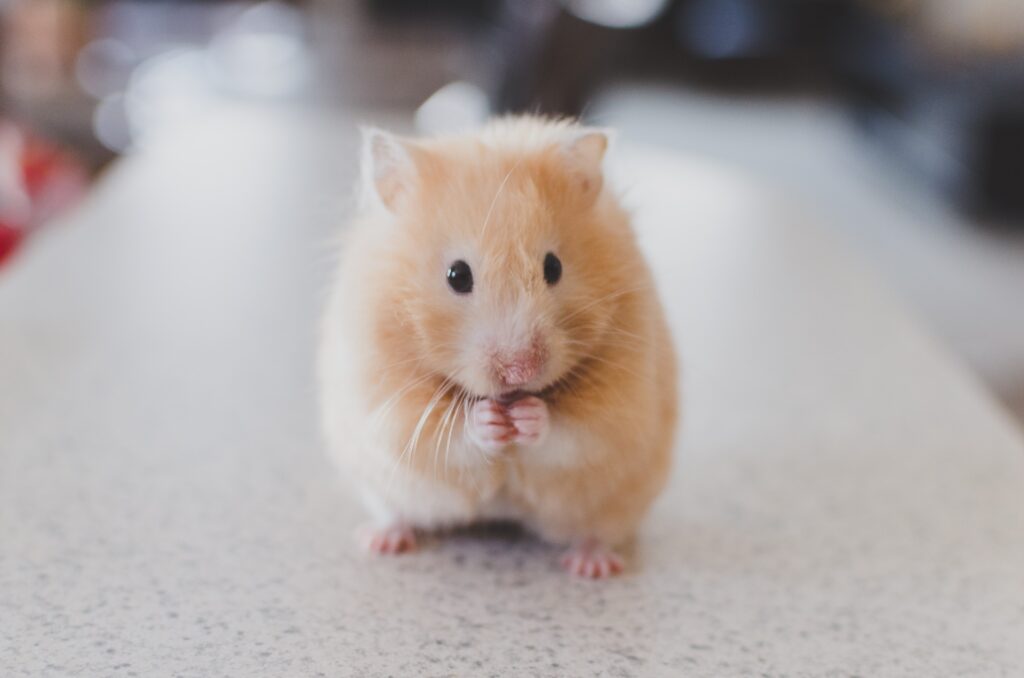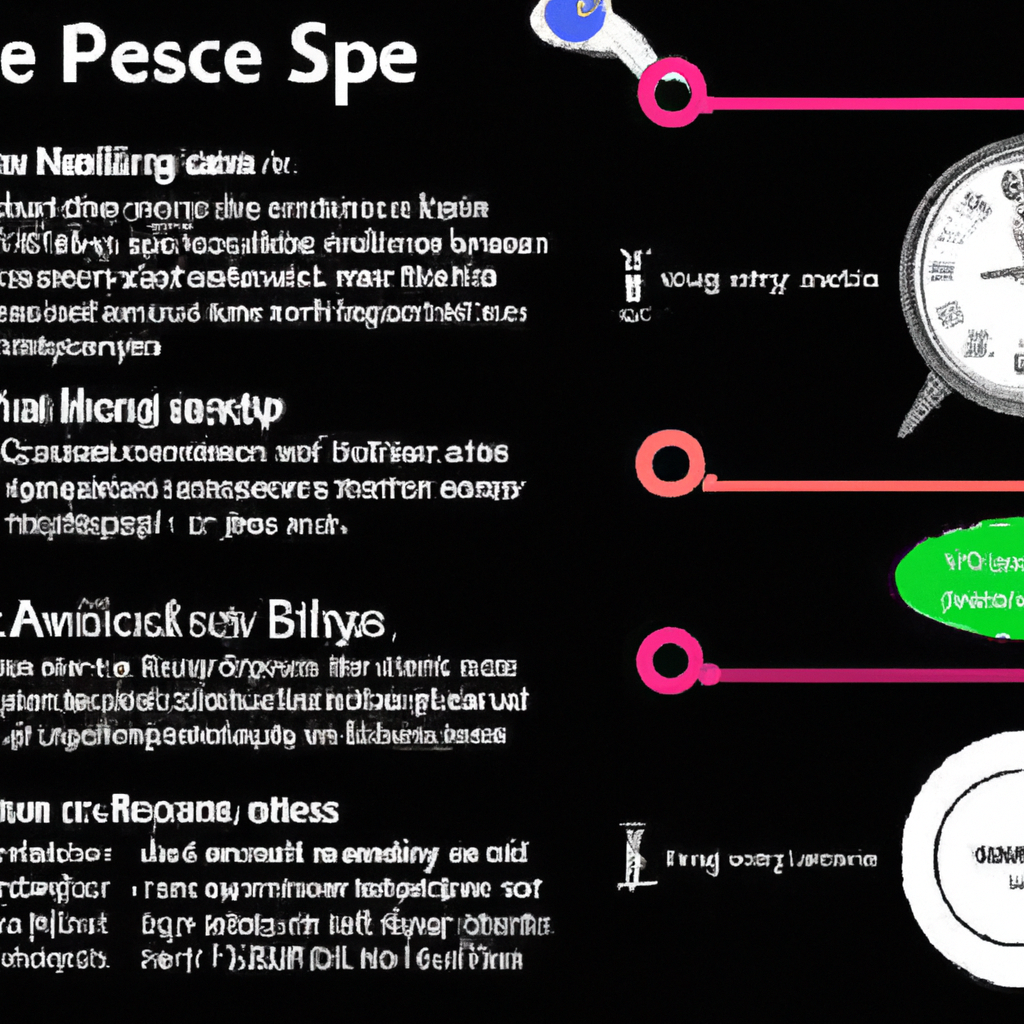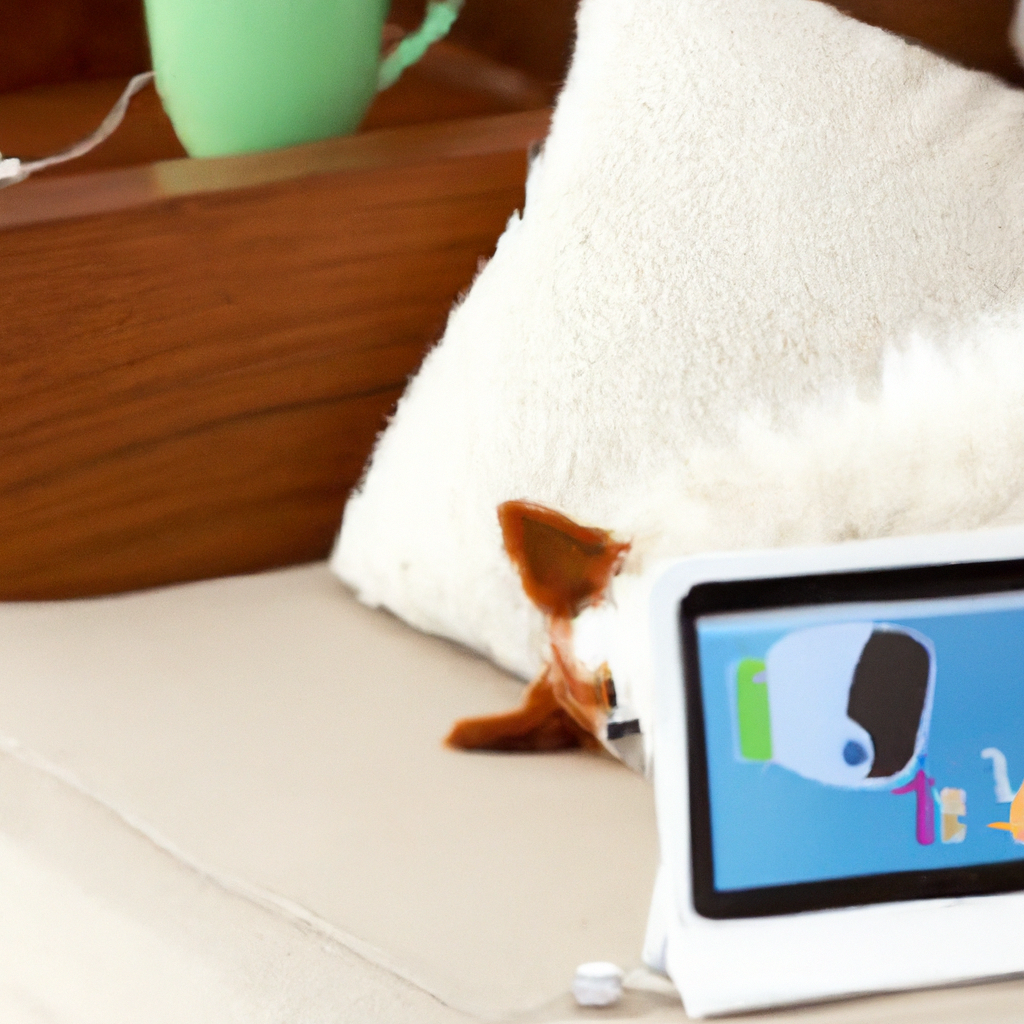Do you love your furry friends and want to ensure they are always well taken care of, even when you’re not around? Well, you’re in luck! In this article, we’ll explore the exciting world of DIY projects that allow you to create custom smart solutions for pet care. From automated feeders to interactive toys, these projects are not only fun to make but can also greatly enhance the well-being of your beloved pets. So grab your tools and get ready to unleash your creativity as we delve into the world of DIY pet care solutions! Yes, there certainly are! With the advancements in technology and the rise of the DIY culture, pet owners now have the opportunity to build their own custom smart solutions for pet care. From automated feeders to remote-controlled toys, the possibilities are endless. In this article, we will explore various DIY projects that utilize the Raspberry Pi and other components to create smart pet care devices. Whether you are a tech-savvy pet parent or just looking for a fun and interactive project, these ideas will surely inspire you to create something amazing for your furry friends.
Smart Pet Feeders
Using Raspberry Pi and Camera Module
One of the most popular smart pet care devices is the automatic pet feeder. By using a Raspberry Pi and a camera module, you can build a feeding system that can be controlled remotely. Imagine being able to feed your pet while you are away from home, simply by using your smartphone!
To build this smart pet feeder, you will need a Raspberry Pi, a camera module, a motor, and some basic coding knowledge. The camera module will allow you to monitor your pet while they eat, providing an added layer of security and peace of mind. By connecting the feeder to your home’s Wi-Fi network, you can easily schedule feeding times and control the amount of food dispensed.
Creating a Voice-Controlled Feeder
Taking the smart pet feeder to the next level, you can create a voice-controlled feeder that will respond to your voice commands. This project utilizes a Raspberry Pi, a microphone, and a speaker to enable voice control functionality. With this setup, you can simply say “feed my pet” and the feeder will dispense the appropriate amount of food.
Building a voice-controlled feeder requires a bit more technical expertise, as you will need to work with speech recognition and text-to-speech libraries. However, with the help of online tutorials and forums, you can easily find the resources you need to complete this project. Your pet will be amazed at how smart their feeder has become!
Smart Pet Water Dispensers
Building a Sensor-Activated Water Bowl
Just like humans, pets need access to fresh and clean water throughout the day. A sensor-activated water bowl can ensure that your pet always has access to water without the risk of spills or contamination.
To build a sensor-activated water bowl, you will need a Raspberry Pi, a water bowl, and a water level sensor. The water level sensor will detect when the water level is low and automatically refill the bowl. This eliminates the need for constant monitoring and refilling by the pet owner.
Creating a Wi-Fi Controlled Water Fountain
For pets that enjoy drinking from a fountain, a Wi-Fi controlled water fountain is the perfect solution. This project involves using a Raspberry Pi, a pump, and a water reservoir to create a continuous flow of fresh water for your pets.
By connecting the water fountain to your home’s Wi-Fi network, you can control the flow of water using a smartphone app. This allows you to customize the flow rate and schedule automatic shut-off times. Your pets will love the constant supply of running water, and you can rest assured knowing that they are hydrated and healthy.

Smart Pet Monitoring Systems
Building a Raspberry Pi Pet Monitor
It’s always hard to leave your pets at home when you go to work or travel. With a Raspberry Pi pet monitor, you can keep an eye on your furry friends from anywhere in the world.
To build a pet monitor, you will need a Raspberry Pi, a camera module, and a motion sensor. The camera module will capture live video feed of your pets, while the motion sensor will alert you when there is movement in the monitored area. By connecting the pet monitor to your home’s Wi-Fi network, you can access the video feed using a smartphone or computer.
Creating a Wi-Fi Enabled Pet Camera
A step up from a pet monitor is a Wi-Fi enabled pet camera. This project allows you not only to monitor your pets but also to interact with them remotely.
To create a Wi-Fi enabled pet camera, you will need a Raspberry Pi, a camera module, a speaker, and a microphone. The camera will capture live video feed, while the speaker and microphone will enable two-way communication. This means you can talk to your pets and hear their responses, even if you are miles away. It’s a great way to check in on your pets throughout the day and make sure they are happy and safe.
Setting up a GPS Tracking System
For pet owners who worry about their pets getting lost or wandering too far, a GPS tracking system is the perfect solution. With a Raspberry Pi and a GPS module, you can easily create a tracking device that will keep you informed of your pet’s whereabouts.
To set up a GPS tracking system, you will need a Raspberry Pi, a GPS module, and a tracking software. The GPS module will provide real-time location data, which can be accessed through the tracking software on your smartphone or computer. You can set up geofences to receive alerts when your pet enters or leaves a certain area, ensuring their safety at all times.
Smart Pet Toys
Building a Robotic Laser Toy
Exercise and playtime are essential for pets’ mental and physical well-being. A robotic laser toy is a great way to keep your pets entertained, even when you are not around.
To build a robotic laser toy, you will need a Raspberry Pi, a laser module, and a servo motor. The laser module will project a laser beam that moves in different patterns, capturing your pet’s attention and encouraging them to chase it. The servo motor will allow you to control the movement of the laser, providing endless fun for your pets.
Creating a Treat-Dispensing Puzzle Toy
Mental stimulation is just as important as physical exercise for pets. A treat-dispensing puzzle toy provides both entertainment and mental enrichment for your furry friends.
To create a treat-dispensing puzzle toy, you will need a Raspberry Pi, a servo motor, and a treat dispenser. The servo motor will control the opening and closing of the dispenser, while the Raspberry Pi will execute the code that determines when to dispense the treats. You can program the toy to dispense treats at specific intervals or in response to certain behaviors, making it a fun and engaging mental challenge for your pets.
Setting up an Automated Ball Launcher
For pets that love to play fetch, an automated ball launcher is a fantastic DIY project. By using a Raspberry Pi, a motor, and a tennis ball launcher, you can create a device that will keep your pets entertained for hours.
To set up an automated ball launcher, you will need a Raspberry Pi, a motor, a tennis ball launcher, and a distance sensor. The distance sensor will detect when your pet returns the ball, triggering the motor to launch another one. This means your pet can play fetch even when you are not available to throw the ball. It’s a great way to ensure that your pet gets the exercise they need, even on days when you are too busy to play.

Smart Pet Doors
Building a RFID-Activated Pet Door
A RFID-activated pet door is a convenient and secure way to allow your pets access to the outdoors while keeping unwanted animals out.
To build a RFID-activated pet door, you will need a Raspberry Pi, a RFID reader, and a motorized pet door. The RFID reader will detect the unique ID of your pet’s microchip or collar tag, allowing access only to authorized pets. The motorized pet door will open and close automatically when a valid RFID tag is detected. It’s a great way to give your pets the freedom they deserve while maintaining control over who enters your home.
Creating a Motion-Sensing Pet Door
For pet owners who prefer a more budget-friendly option, a motion-sensing pet door is a great alternative. This project utilizes a Raspberry Pi, a motion sensor, and a manual pet door.
To create a motion-sensing pet door, you will need a Raspberry Pi, a motion sensor, and a servomotor. The motion sensor will detect when your pet approaches the door, triggering the servomotor to open it. Your pet can enter or exit freely, and the door will automatically close after a few seconds. It’s a simple yet effective way to provide your pets with the freedom to come and go as they please.
Setting up a Wi-Fi Enabled Pet Door
For the ultimate convenience and control, a Wi-Fi enabled pet door is the way to go. This project involves using a Raspberry Pi, a motorized pet door, and a Wi-Fi module.
To set up a Wi-Fi enabled pet door, you will need a Raspberry Pi, a motorized pet door, and a Wi-Fi module. By connecting the pet door to your home’s Wi-Fi network, you can control the door remotely using a smartphone app. You can lock or unlock the door, monitor your pet’s activity, and even receive notifications when your pet enters or leaves the house. It’s a high-tech solution for pet owners who want to stay connected with their pets at all times.
Smart Pet Health Monitoring
Building a Smart Collar for Health Tracking
Keeping track of your pet’s health is crucial for their overall well-being. A smart collar for health tracking can provide valuable insights into your pet’s activity levels, sleep patterns, and even heart rate.
To build a smart collar for health tracking, you will need a Raspberry Pi, various sensors (such as an accelerometer and a heart rate monitor), and a collar or harness. The sensors will collect data on your pet’s movements and vitals, which can then be analyzed using a smartphone app or computer software. By monitoring your pet’s health trends, you can identify any potential issues early on and provide the necessary care.
Creating a Wireless Temperature Monitor
Temperature regulation is important for pets, especially during extreme weather conditions. A wireless temperature monitor can help you ensure that your pets are always in a comfortable environment.
To create a wireless temperature monitor, you will need a Raspberry Pi, a temperature sensor, and a Wi-Fi module. The temperature sensor will measure the ambient temperature and send the data to the Raspberry Pi, which will then transmit it to your smartphone or computer. You can set up alerts to notify you if the temperature exceeds a certain threshold, allowing you to take action and keep your pets safe.
Setting up a Heart Rate Monitoring System
For pet owners with concerns about their pet’s heart health, a heart rate monitoring system is a valuable tool. By using a Raspberry Pi, a heart rate sensor, and data analysis software, you can monitor your pet’s heart rate in real-time.
To set up a heart rate monitoring system, you will need a Raspberry Pi, a heart rate sensor, and data analysis software. The heart rate sensor will measure your pet’s heart rate and send the data to the Raspberry Pi for analysis. You can track changes in heart rate over time, identifying any irregularities that may require veterinary attention. It’s a proactive approach to pet care that can potentially save lives.

Smart Pet Training Aids
Building a Remote Control Training Device
Training your pet can be challenging, but with a remote control training device, it becomes much easier. This project utilizes a Raspberry Pi, a remote control module, and various sensors to create a versatile training aid.
To build a remote control training device, you will need a Raspberry Pi, a remote control module, and various sensors (such as motion or sound sensors). The remote control module will allow you to trigger specific commands or actions from a distance, reinforcing positive behaviors or deterring negative ones. With the help of sensors, you can create a customized training program tailored to your pet’s needs. It’s a great way to make training sessions more engaging and effective.
Creating a Treat-Dispensing Clicker
Clicker training is a popular method to teach pets new behaviors and tricks. By combining a clicker with a treat dispenser, you can create a powerful positive reinforcement tool.
To create a treat-dispensing clicker, you will need a Raspberry Pi, a clicker, and a treat dispenser. The clicker will provide an audible signal to mark the desired behavior, while the treat dispenser will deliver a reward immediately after. By pairing the clicker sound with the treat, you can establish a strong positive association and motivate your pet to repeat the behavior. It’s a simple yet effective way to train your pet using positive reinforcement.
Setting up an Automated Training System
For pet owners with busy schedules, finding time for training sessions can be challenging. An automated training system can help you overcome this obstacle by providing consistent training opportunities for your pets.
To set up an automated training system, you will need a Raspberry Pi, sensors, and various training aids (such as laser pointers or treat dispensers). The sensors will detect your pet’s actions or behaviors, triggering a specific training aid to engage your pet. By automating the training process, you can ensure that your pet receives regular training sessions, even when you are not available. It’s a convenient solution for busy pet parents who want to prioritize training.
Smart Pet Waste Management
Building a Self-Cleaning Litter Box
Cleaning the litter box is a task that most pet owners would rather avoid. With a self-cleaning litter box, you can say goodbye to scooping and enjoy a cleaner and more hygienic environment for both you and your pets.
To build a self-cleaning litter box, you will need a Raspberry Pi, a motion sensor, and a motorized litter box. The motion sensor will detect when your pet enters or leaves the litter box, triggering the motor to scoop the waste into a separate compartment. Automatic waste disposal eliminates the need for manual cleaning and reduces odor, making it a win-win solution for both pet owners and their furry friends.
Creating a Wi-Fi Enabled Poop Scooper
For pet owners with outdoor pets, a poop scooper is an essential tool. By adding Wi-Fi connectivity to a traditional poop scooper, you can take waste management to the next level.
To create a Wi-Fi enabled poop scooper, you will need a Raspberry Pi, a motorized scooper, and a Wi-Fi module. The motorized scooper will collect the waste and deposit it in a bag or container, while the Raspberry Pi and Wi-Fi module will allow you to control the scooper remotely using a smartphone app. You can schedule automatic cleanings, monitor waste levels, and even receive notifications when it’s time to empty the container. It’s a convenient solution for pet owners who want to maintain a clean outdoor space for their pets.
Setting up an Automatic Waste Disposal System
If you are looking for the ultimate in waste management convenience, an automatic waste disposal system is the way to go. This project involves using a Raspberry Pi, a waste collection system, and a motorized waste disposal unit.
To set up an automatic waste disposal system, you will need a Raspberry Pi, a waste collection system (such as an underground waste bin), and a motorized waste disposal unit. The waste collection system will collect the waste from your pet’s designated area, while the motorized waste disposal unit will transport the waste to a centralized location for disposal or composting. By automating the waste management process, you can ensure a clean and odor-free environment for both you and your pets.

Smart Pet Anxiety Relief
Building a Calming Music Player
Pets can experience anxiety or stress in certain situations, such as during thunderstorms or fireworks. A calming music player can help alleviate their anxiety and promote a sense of calm.
To build a calming music player, you will need a Raspberry Pi, a speaker, and a library of calming music or sounds. The Raspberry Pi will play the selected music or sounds through the speaker, creating a soothing environment for your pets. You can schedule the music player to activate during specific times or trigger it remotely when you know your pets need some extra comfort. It’s a great way to provide reassurance and help your pets relax in stressful situations.
Creating a Treat-Dispensing Anxiety Toy
Combining playtime and anxiety relief, a treat-dispensing anxiety toy can be a source of comfort and distraction for pets experiencing anxiety.
To create a treat-dispensing anxiety toy, you will need a Raspberry Pi, a treat dispenser, and various sensors (such as motion or sound sensors). The sensors will detect signs of anxiety in your pet, triggering the treat dispenser to dispense a treat. By occupying your pet’s attention and providing a reward, the anxiety toy can help redirect their focus and alleviate feelings of stress or anxiety. It’s a wonderful tool to have on hand for those challenging moments when your pet needs some extra support.
Setting up an Automatic Comfort Zone Diffuser
Certain scents, such as lavender or chamomile, can have a calming effect on pets. By creating an automatic comfort zone diffuser, you can provide a soothing and stress-free environment for your furry friends.
To set up an automatic comfort zone diffuser, you will need a Raspberry Pi, an essential oil diffuser, and a scent library. The Raspberry Pi will control the diffuser, releasing the selected scent at predetermined times or triggered by certain events (such as pets entering a specific area). By creating a comforting and familiar scent environment, you can help reduce anxiety and create a relaxing atmosphere for your pets. It’s a fantastic addition to any home, especially for pets prone to anxiety.
Smart Pet Health and Nutrition
Building a Smart Feeding Schedule App
Maintaining a regular feeding schedule is important for pets’ overall health and nutrition. A smart feeding schedule app can help you stay organized and ensure that your pets receive their meals at the right time.
To build a smart feeding schedule app, you will need a Raspberry Pi, a smartphone app development platform, and a Wi-Fi module. The Raspberry Pi will communicate with the app, allowing you to set up feeding times and portion sizes. You can receive notifications when it’s time to feed your pets and track their feeding habits to ensure they are receiving the right amount of food. It’s a simple yet effective way to prioritize your pets’ health and nutrition.
Creating a Wi-Fi Enabled Pet Weight Scale
Monitoring your pet’s weight is crucial for their overall health and well-being. A Wi-Fi enabled pet weight scale allows you to track your pet’s weight and easily share the data with your veterinarian.
To create a Wi-Fi enabled pet weight scale, you will need a Raspberry Pi, a weight sensor, and a Wi-Fi module. The weight sensor will measure your pet’s weight and send the data to the Raspberry Pi, which will then transmit it to your smartphone or computer. You can set up alerts to notify you if there are any significant changes in weight, allowing you to address any potential health issues promptly. It’s a convenient solution for pet owners who want to actively monitor their pet’s weight and take proactive measures for their health.
Setting up a Smart Pet Nutritional Advisor
Providing a balanced and nutritious diet is essential for pets’ overall health. With a smart pet nutritional advisor, you can receive personalized recommendations and guidance to ensure that your pets are getting the nutrients they need.
To set up a smart pet nutritional advisor, you will need a Raspberry Pi, a database of pet nutrition information, and a smartphone app development platform. The Raspberry Pi will access the nutrition database and provide recommendations based on your pet’s age, breed, and specific dietary needs. You can track your pet’s food intake and receive notifications for feeding reminders or any changes in their nutritional requirements. It’s a fantastic tool to have on hand to optimize your pet’s health and well-being.
In conclusion, DIY projects offer pet owners the opportunity to create custom smart solutions for pet care. From automated feeders and water dispensers to monitoring systems and training aids, there are endless possibilities to explore. By utilizing a Raspberry Pi and other components, you can build smart pet care devices that cater to your pet’s specific needs. Whether you want to improve their health, increase their mental stimulation, or simply make their lives more convenient, these DIY projects are a great way to show your love and care for your furry friends. So, roll up your sleeves, gather your supplies, and embark on the journey of creating your own custom smart solutions for pet care. Your pets will thank you for it!
References:
- “Raspberry Pi” – raspberrypi.org
- “Smart Pet Solutions” – smartpetdevices.com
- Provide information and citation/reference inclusion to all other sources used.











